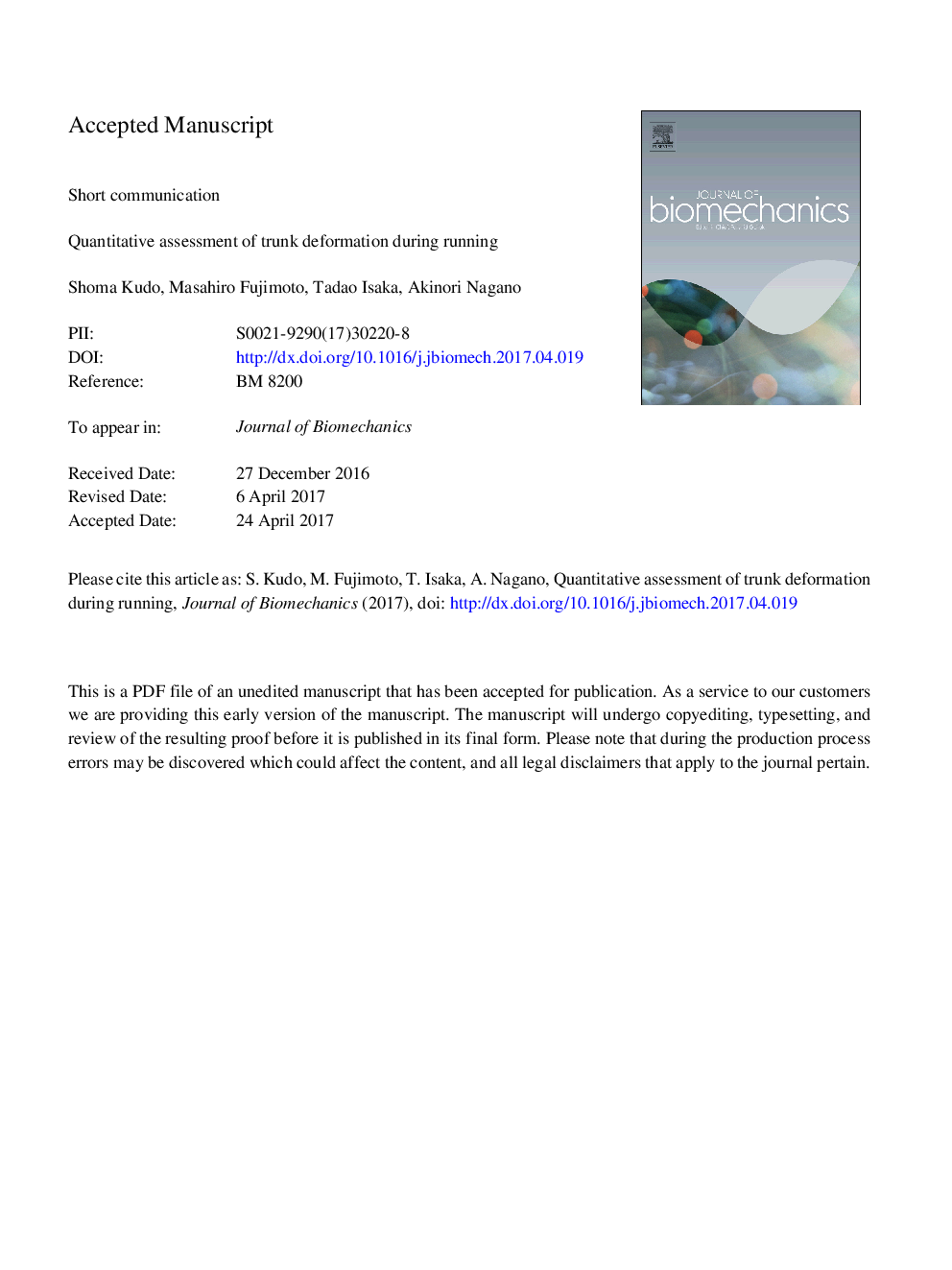| Article ID | Journal | Published Year | Pages | File Type |
|---|---|---|---|---|
| 5032265 | Journal of Biomechanics | 2017 | 23 Pages |
Abstract
The trunk has a multi-segmental structure and is composed of the cervical, thoracic, and lumber spines and surrounding soft tissue elements; this allows flexible deformation during dynamic movements. The purpose of this study was to quantitatively assess trunk deformation during dynamic movement. Ten male subjects performed running at four different speeds: 8 km/h, 10 km/h, 12 km/h, and 14 km/h. Forty reflective markers were placed on the backs of these individuals to define 56 small triangular areas, and three-dimensional kinematic data was recorded with a motion capture system. The coefficients of variation (CV) of the horizontal and vertical lengths between two adjacent markers and the standard deviation (SD) of the normal vectors of triangular areas were calculated as measures for translational and angular trunk deformation, respectively. Up to about 14% of CV and 78° of SD appeared as the measure of translational and angular deformation, respectively. These results imply that the trunk underwent a significant amount of position-specific deformation. These findings would be useful in the construction of an optimal trunk segment model to represent the complex and flexible trunk movement during dynamic movements.
Keywords
Related Topics
Physical Sciences and Engineering
Engineering
Biomedical Engineering
Authors
Shoma Kudo, Masahiro Fujimoto, Tadao Isaka, Akinori Nagano,
